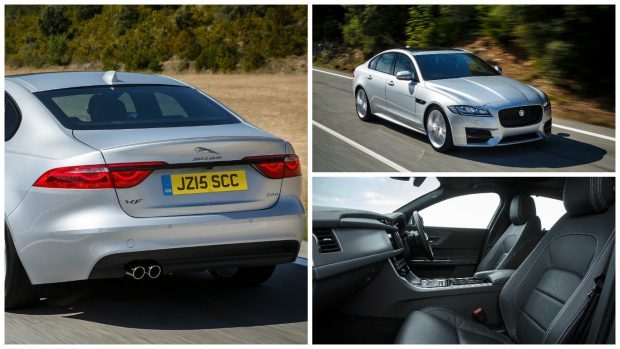If you think the big three prestigious German brands have the executive car segment sewn-up, a drive in Jaguar’s second-generation XF may be enough to make you reconsider.
Even in the face of tough competition from rivals like the BMW 5 Series, the Mercedes E-Class and the Audi A6, this car offers a compelling range of virtues, more spacious than before and with greater levels of quality and connectivity.
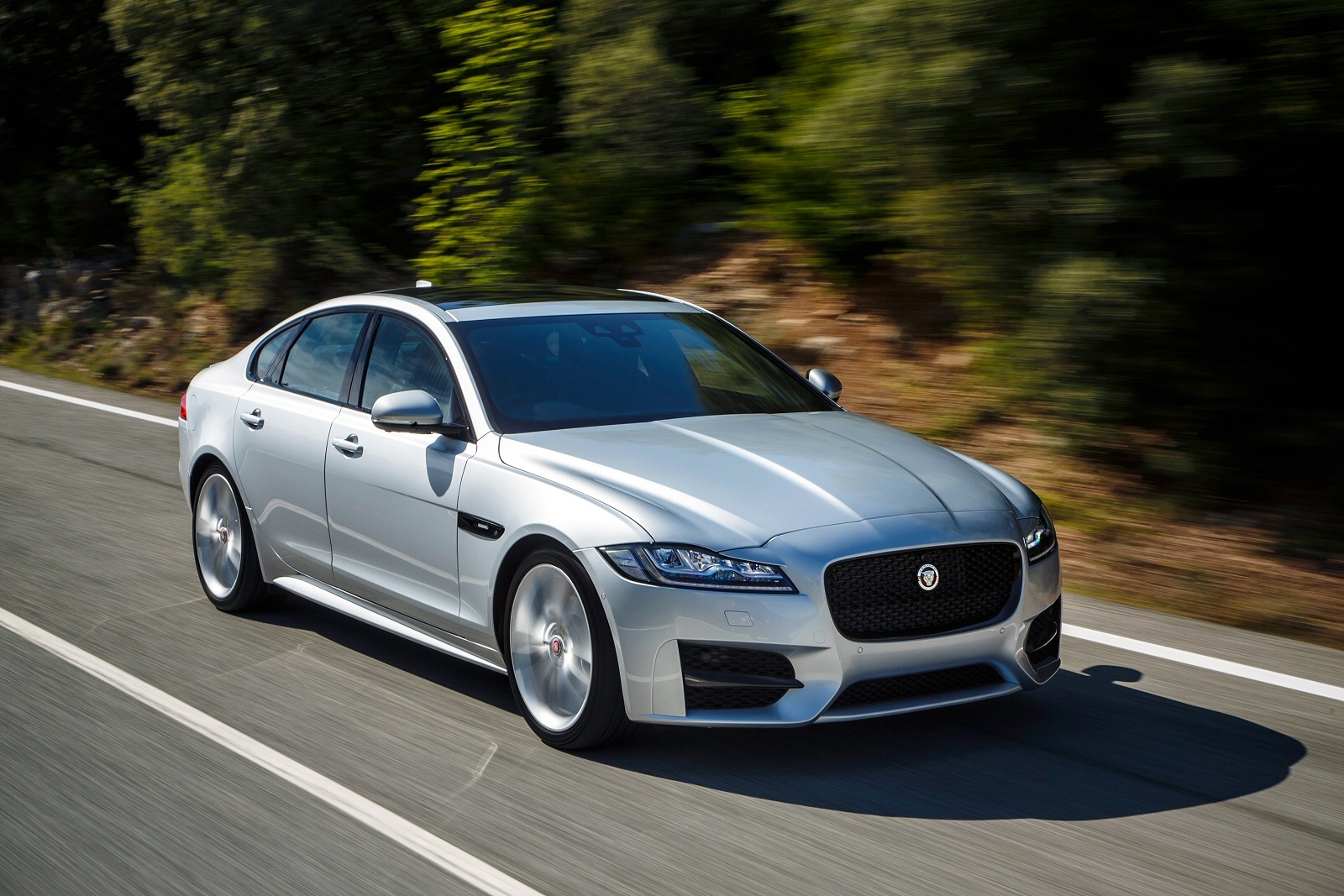
Perhaps most significantly, this Mk2 model’s aluminium-intensive architecture provides for weight savings that have delivered sharper handling and class-leading efficiency from this volume 2.2-litre diesel variant.
In short, it’s a very complete package.
So, to the second-generation Jaguar XF. It might not look very different, yet a styling evolution hides a product revolution. This Mk2 model is lighter, more efficient and packed with technology, an improvement on its predecessor in every possible respect.
Slightly more compact dimensions disguise a longer wheelbase that’s allowed a much more spacious cabin, especially for rear-seat folk.
What hasn’t changed is the XF’s remit as a more sporting, dynamic choice in the full-sized executive segment.
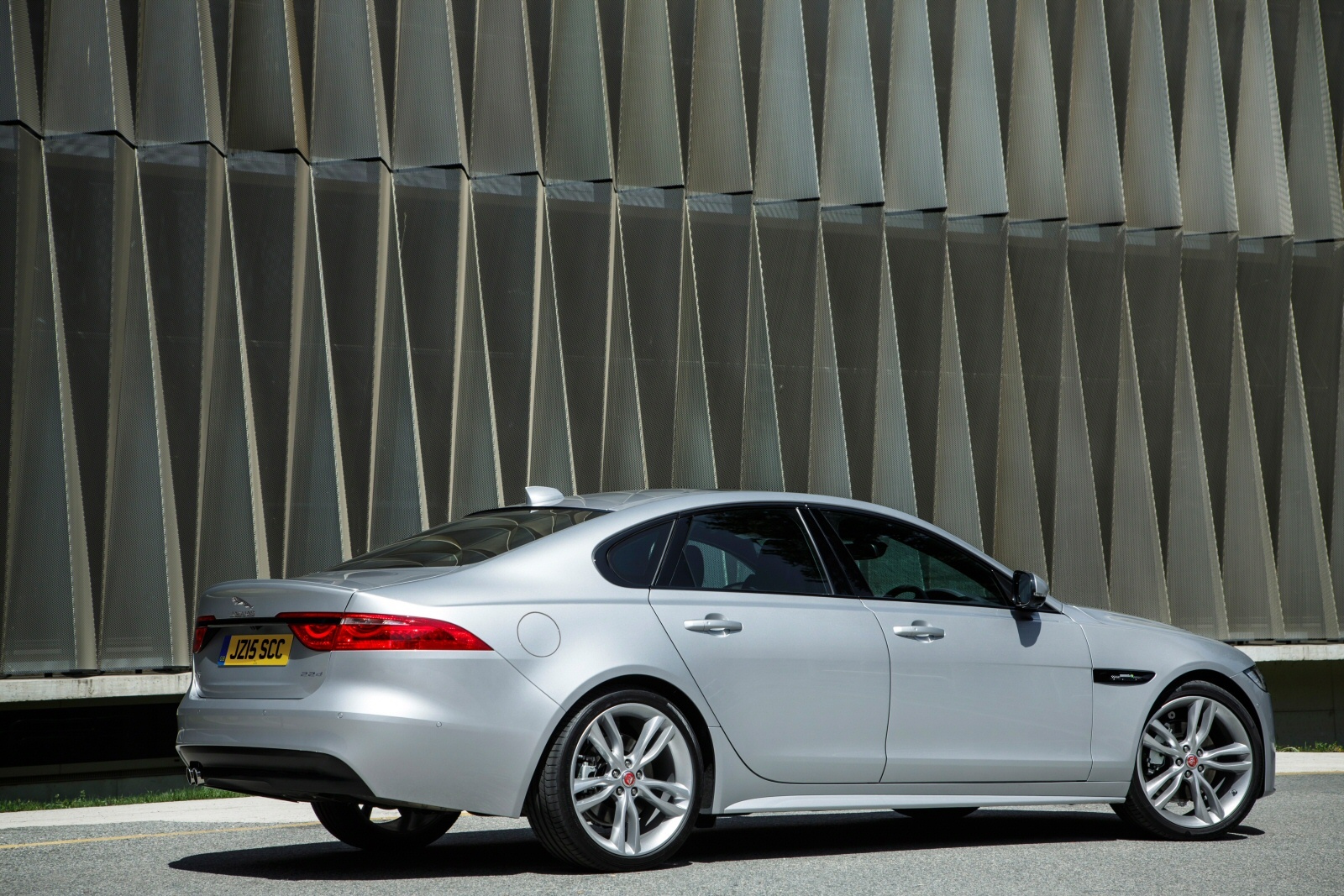
To put that in competitive context, it’s more BMW 5 Series than Audi A6 or Mercedes E-Class, though buyers of all three of these cars should be tempted by this model’s cutting-edge cabin technology and the class-leading efficiency figures of the 2.2-litre diesel variant we tried.
On the move, the weight savings quickly make themselves felt, with sharp corner turn-in aided by a responsive electric power steering system, a much stiffer body and standard torque vectoring that eliminates understeer and keeps you on your chosen line.
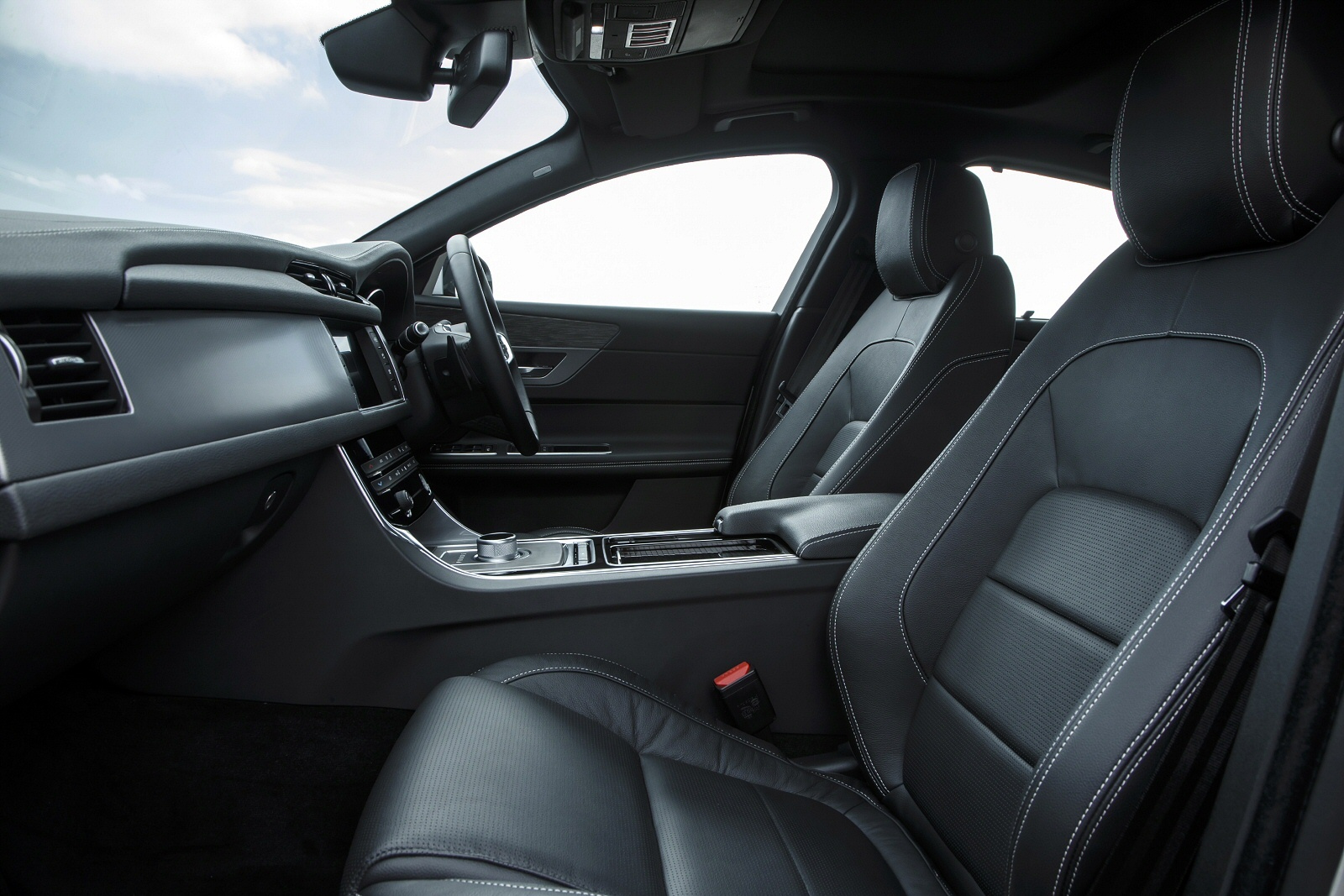
A JaguarDrive Control driving modes system offers you Eco, Normal and Dynamic settings that tweak throttle response, steering feel and gear change timings, depending on the way you want to drive.
Plus, there’s a Winter mode which, on automatic models, includes an All-Surface Progress set-up for easier take-off on slippery surfaces.
If you want adaptive damping too, you can get it via an optional Adaptive Dynamics system.
Engine-wise, most buyers will want the 2.0-litre i4 Ingenium-series four cylinder diesel powerplant, offered in either 160 or 177bhp guises. The lower-powered variant offers class-leading supermini-style efficiency figures but has less torque than the pokier 177bhp derivative we tried, a car that makes 62mph in 8.1 seconds en route to 136mph.
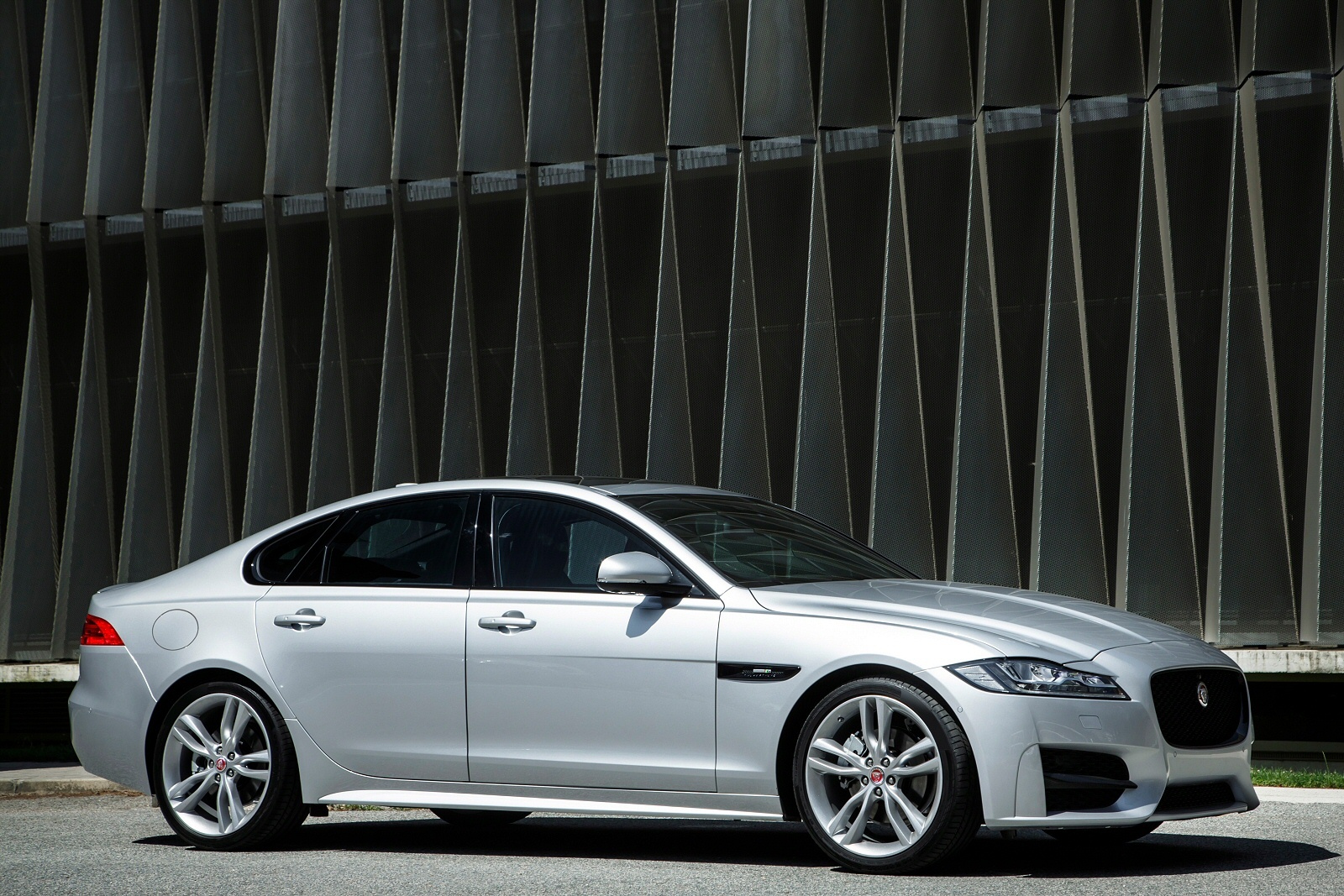
There’s a choice of either six-speed manual transmission (a first for XF buyers) or the eight-speed auto box that most will want.
From almost any angle, you’d know this was a Jaguar XF. It’s a very different one though, in ways you simply won’t appreciate if all you offer this car is a cursory glance.
The sweeping coupe-like profile that defined the original model has evolved, the roofline lower, and the rear deck longer and higher.
The interior has come in for a rethink and Jaguar has worked to retain the same strong horizontal lines of the original XF fascia but render them in higher quality materials with a more mature design ethos.
The layered instrument panel, now with Jaguar signature Riva Hoop inspired by the XJ, continues into the door, creating a special cabin feel. The doors offer an optional soft-close function, and there’s plenty of natural light flooding the cabin.
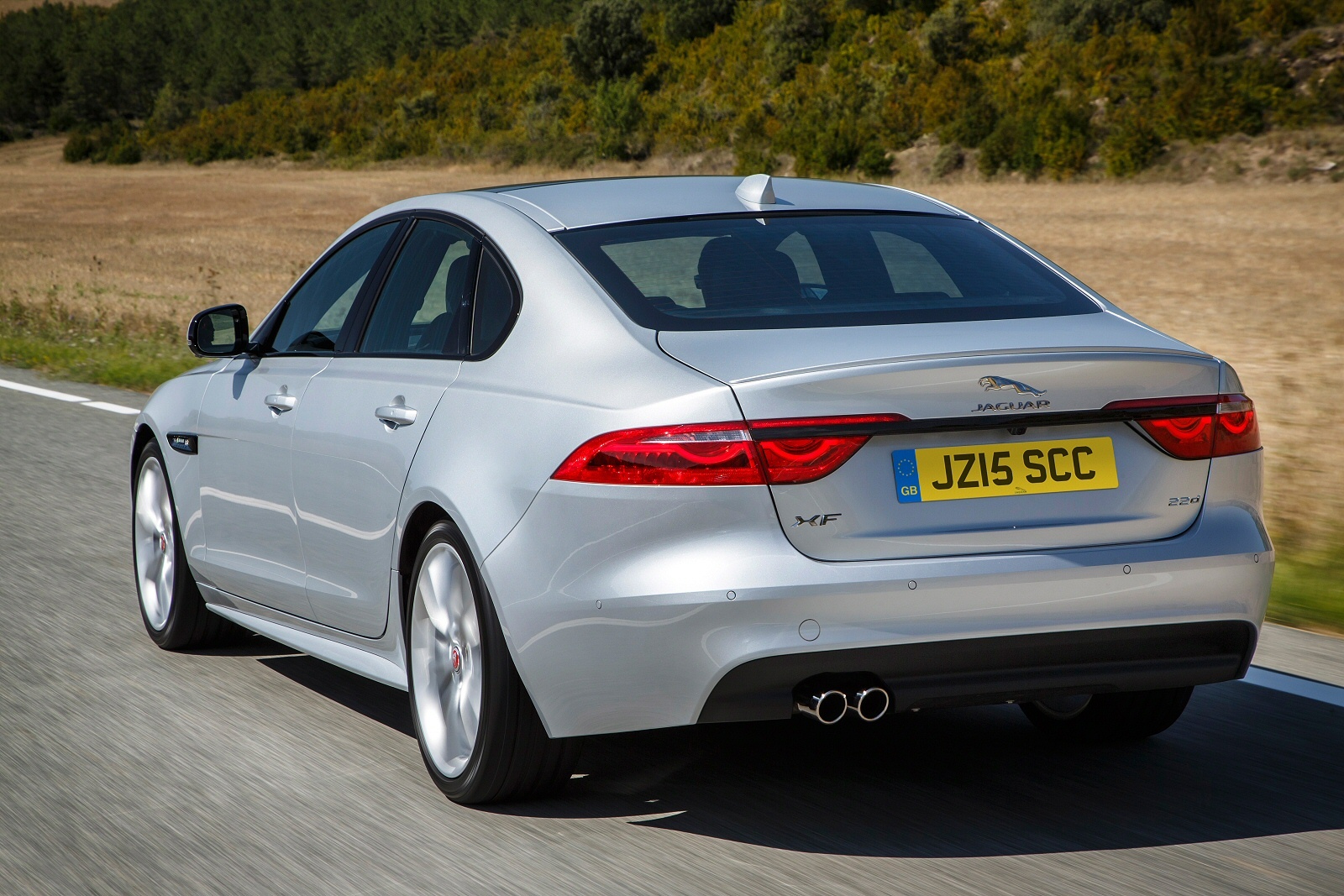
If you want more, you can specify a panoramic sunroof. The rear bench also features a more practical 40:20:40 split, making it easier to through-load bulky items such as skis, and the boot has the option of a power close function.
It seems strange to remember now that the original version of this XF was launched without the thing that most executive segment buyers actually want – a four-cylinder diesel engine.
They’ve certainly got the idea when it comes to the importance of a four-cylinder diesel, the Mk2 model saloon line-up we’re looking at here fundamentally built around Jaguar’s new 2.0-litre diesel unit.
Just how class-competitively efficient could an XF really be if it didn’t have to rely on old-fashioned Ford-derived underpinnings and engineware?
This second generation model at last gives us the answer to that question, using Jaguar’s industry-leading expertise in lightweight aluminium construction and a freshly-developed range of Ingenium-series four-cylinder diesel powerplants to set new running cost standards in the full-sized executive segment.
It seems almost unbelievable that the 2.2-litre diesel version of this car opens with a supermini-style 104g/km CO2 emissions figure, but there it is. Step up to the 177bhp variant and you’ll still only see 109g/km – leading to an identical taxation banding. Go for an entry-level manual car and you’ll manage 71.7mpg.
Lighter, more spacious, better-looking and a whole lot more efficient, this car will worry the German makers more than any model Jaguar has brought us so far. But then perhaps we should have expected that based on the company’s recent near-flawless record under Indian ownership. Investment from TATA goes in: excellent cars come out. It seems to be as simple as that.
What’s so masterful about this second generation XF is how cleverly Jaguar has kept and built upon what was good about the original version, while being realistic about where the old car’s weaknesses were.
As a result, you now really can have a beautiful executive class car that offers cutting-edge technology and a dynamic driving experience, but which is also built in Britain and sips fuel like a supermini.
THE FACTS
Model: Jaguar XF
Price: £32,000-£40,000
Engine: 2.2-litre diesel producing 160 or 177bhp
Transmission: Six speed manual
Performance: 0-60mph in 8.1 seconds, top speed 136mph (177bhp model)
Economy: 71.7mpg (160bhp model)
CO2 emissions: 104g/km (160bhp model)
